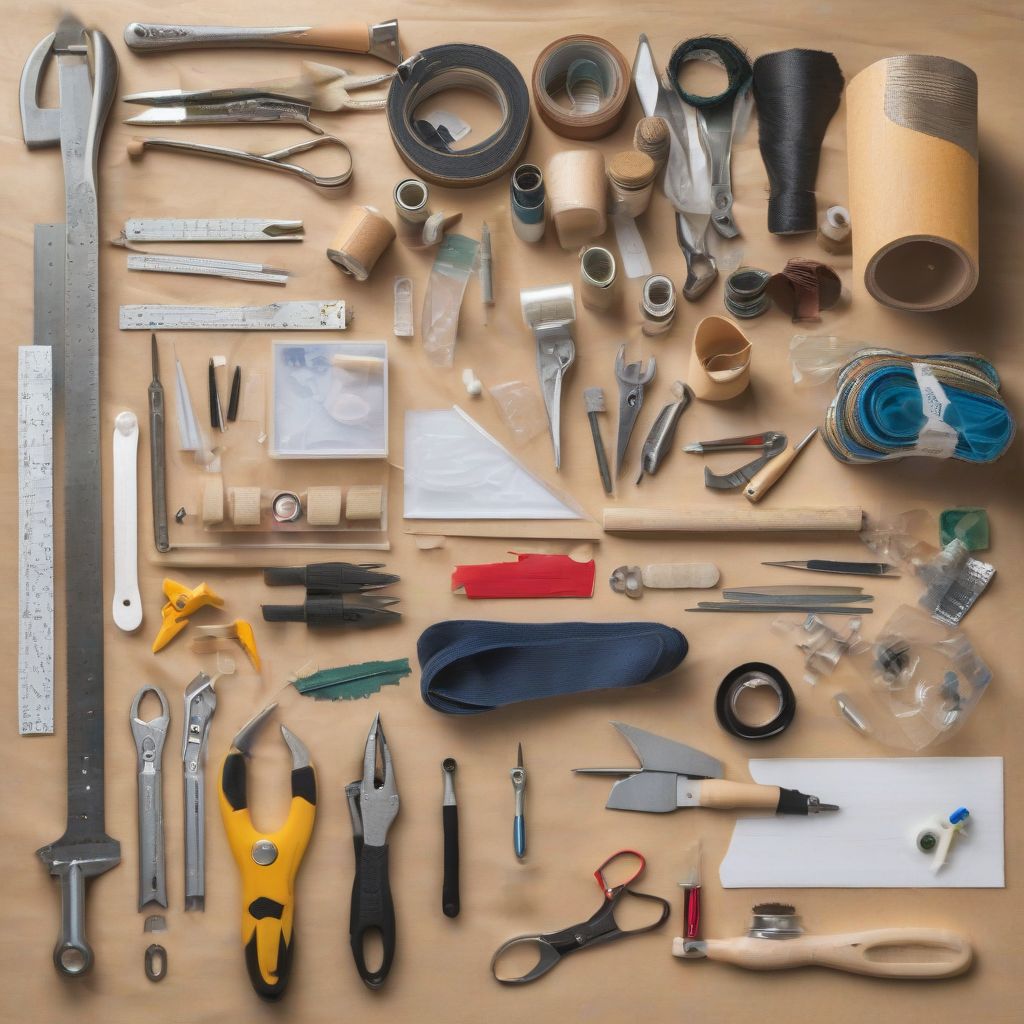Have you ever been midway through a DIY project, only to realize the material you chose is completely wrong for the job? It’s a frustrating experience, but one that’s easily avoidable with a little planning. Choosing the right materials is crucial for any DIY project, whether you’re building a bookshelf, refinishing a table, or creating a piece of wall art. It impacts the project’s durability, aesthetics, and even your overall satisfaction. So, how do you navigate the world of wood, metal, plastics, and fabrics to find the perfect fit? This guide will walk you through the process, offering practical tips and insights to ensure your next project is a resounding success.
Understanding Your Project Needs
Before rushing to the hardware store, take a step back and analyze your project. Consider the following factors:
Function: What is the item’s intended purpose?
A bookshelf needs to be sturdy and able to bear weight, while a decorative item might prioritize aesthetics over strength. If you are building an outdoor project, choose weather-resistant materials like cedar or treated lumber. For indoor projects, a wider variety of materials, like pine or MDF, may be suitable.
Environment: Where will the finished product be located?
Will it be exposed to the elements, moisture, or high traffic? This determines whether you need materials that are waterproof, rust-resistant, or scratch-proof. “Choosing materials based on the environment is like selecting the right outfit,” says renowned DIY expert Bob Villa. “You wouldn’t wear a swimsuit to a snowstorm, just as you wouldn’t use untreated wood for an outdoor project.”
Budget: How much are you willing to spend?
Some materials are significantly more expensive than others. Set a realistic budget beforehand to avoid overspending. Pine, for instance, is a budget-friendly option for many woodworking projects, while hardwoods like oak or cherry will command a higher price.
Skill Level: What are your DIY capabilities?
Some materials are easier to work with than others. If you’re a beginner, opt for materials that are forgiving and don’t require specialized tools or techniques. “Starting with simple materials can build confidence and allow you to develop your skills gradually,” advises Sarah, a seasoned DIY blogger and author of “DIY Home Projects for Beginners”.
Exploring Common DIY Materials
Now that you have a better understanding of your project needs, let’s delve into the world of DIY materials.
Wood: A Versatile Classic
Wood is a popular choice for its natural beauty, versatility, and ease of workability. From softwoods like pine and fir to hardwoods like oak and maple, there’s a wood type for every project.
- Softwoods: Ideal for beginner projects, framing, and general construction.
- Hardwoods: Best for furniture, flooring, and projects requiring durability and intricate detail.
- Engineered Wood: A cost-effective alternative for projects where solid wood isn’t necessary.
Metal: Strength and Durability
Metal offers strength, durability, and a modern aesthetic. Common DIY metals include steel, aluminum, and copper.
- Steel: Strong and resistant to corrosion, making it suitable for outdoor projects.
- Aluminum: Lightweight and easy to work with, ideal for smaller projects and decorative items.
- Copper: Adds a touch of elegance and is often used for plumbing and decorative accents.
Plastics: Versatility and Affordability
Plastics come in a wide variety of forms, each with its own unique properties. PVC pipes are commonly used for plumbing and construction projects, while acrylic sheets are great for creating signs and displays.
- PVC: Durable, waterproof, and easy to assemble.
- Acrylic: Lightweight, shatter-resistant, and available in various colors and finishes.
- Recycled Plastics: An eco-friendly option for various DIY projects.
Fabrics: Adding Texture and Color
Fabrics are often used for upholstery, curtains, and other decorative projects.
- Cotton: A versatile and affordable option, suitable for various projects.
- Linen: Adds a touch of elegance and durability.
- Canvas: A heavy-duty fabric, ideal for outdoor projects or items requiring strength.
 Choosing the Right Materials for DIY Projects
Choosing the Right Materials for DIY Projects
Tips for Choosing the Right Materials
Here are a few additional tips to guide your material selection:
- Research: Before making a purchase, research the different types of materials available and their properties.
- Read Reviews: Check online reviews to see what other DIYers have to say about specific products.
- Consider Sustainability: Choose environmentally friendly materials whenever possible.
- Ask for Advice: Don’t hesitate to ask for advice from experts at your local hardware store.
Conclusion
Choosing the right materials can make or break your DIY project. By understanding your project needs, exploring common materials, and following these simple tips, you can ensure your next DIY endeavor is a success. Remember, the right materials not only contribute to a beautiful finished product but also to a more enjoyable and rewarding DIY experience. Now that you are well-equipped with the knowledge of choosing the right materials, check out these related posts about starting your first DIY home project with ease and finding the best beginner-friendly DIY projects for home improvement. What are your favorite DIY materials to work with? Share your thoughts and experiences in the comments below!



